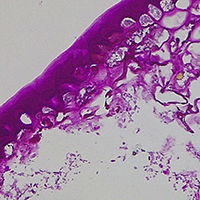A morphological analysis of fresh and brine-cured olives attacked by Bactrocera oleae using light microscopy and ESEM-EDS

Submitted: 8 June 2020
Accepted: 2 September 2020
Published: 23 September 2020
Accepted: 2 September 2020
Abstract Views: 662
PDF: 696
HTML: 5
HTML: 5
Publisher's note
All claims expressed in this article are solely those of the authors and do not necessarily represent those of their affiliated organizations, or those of the publisher, the editors and the reviewers. Any product that may be evaluated in this article or claim that may be made by its manufacturer is not guaranteed or endorsed by the publisher.
All claims expressed in this article are solely those of the authors and do not necessarily represent those of their affiliated organizations, or those of the publisher, the editors and the reviewers. Any product that may be evaluated in this article or claim that may be made by its manufacturer is not guaranteed or endorsed by the publisher.

 https://doi.org/10.4081/ejh.2020.3149
https://doi.org/10.4081/ejh.2020.3149






